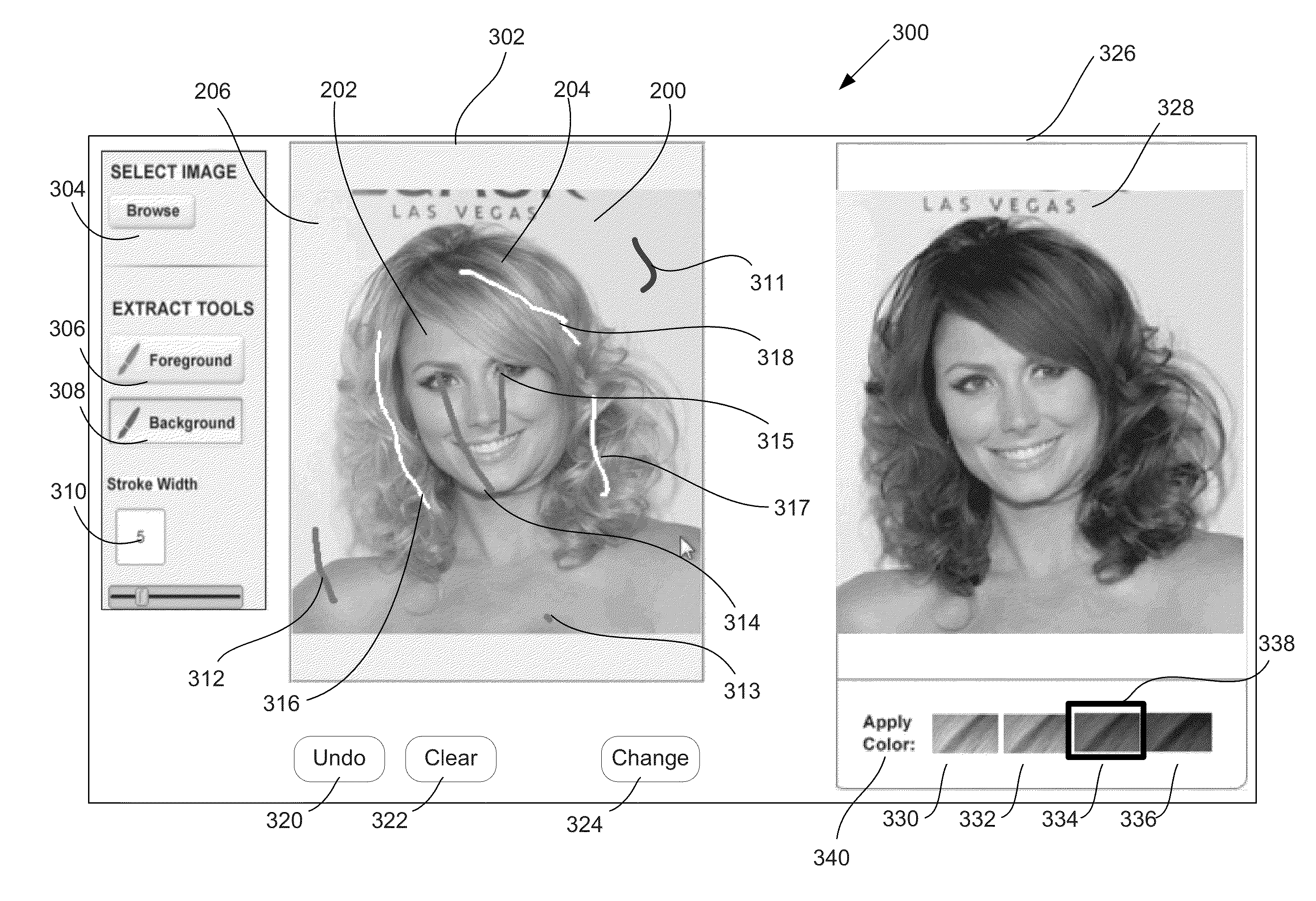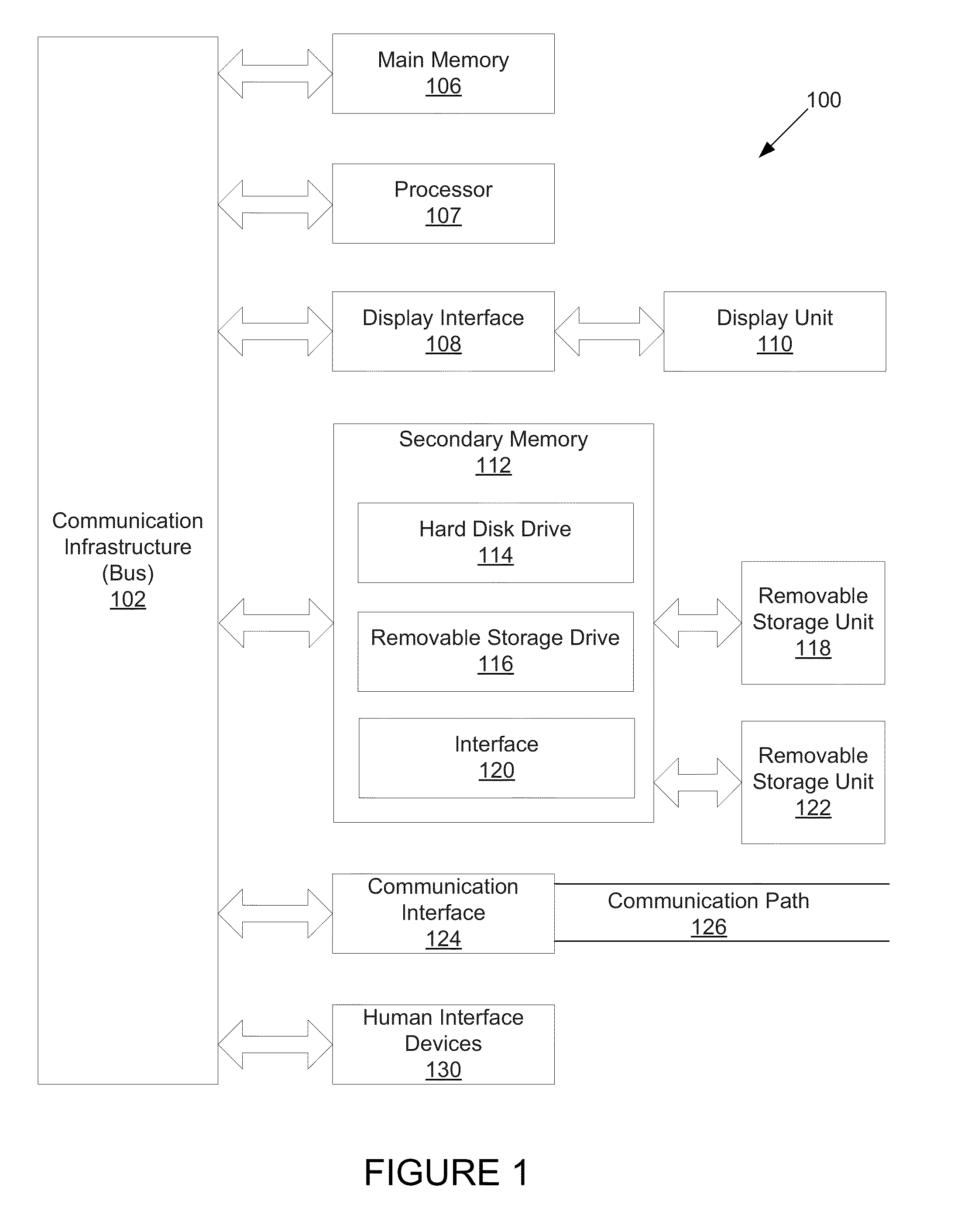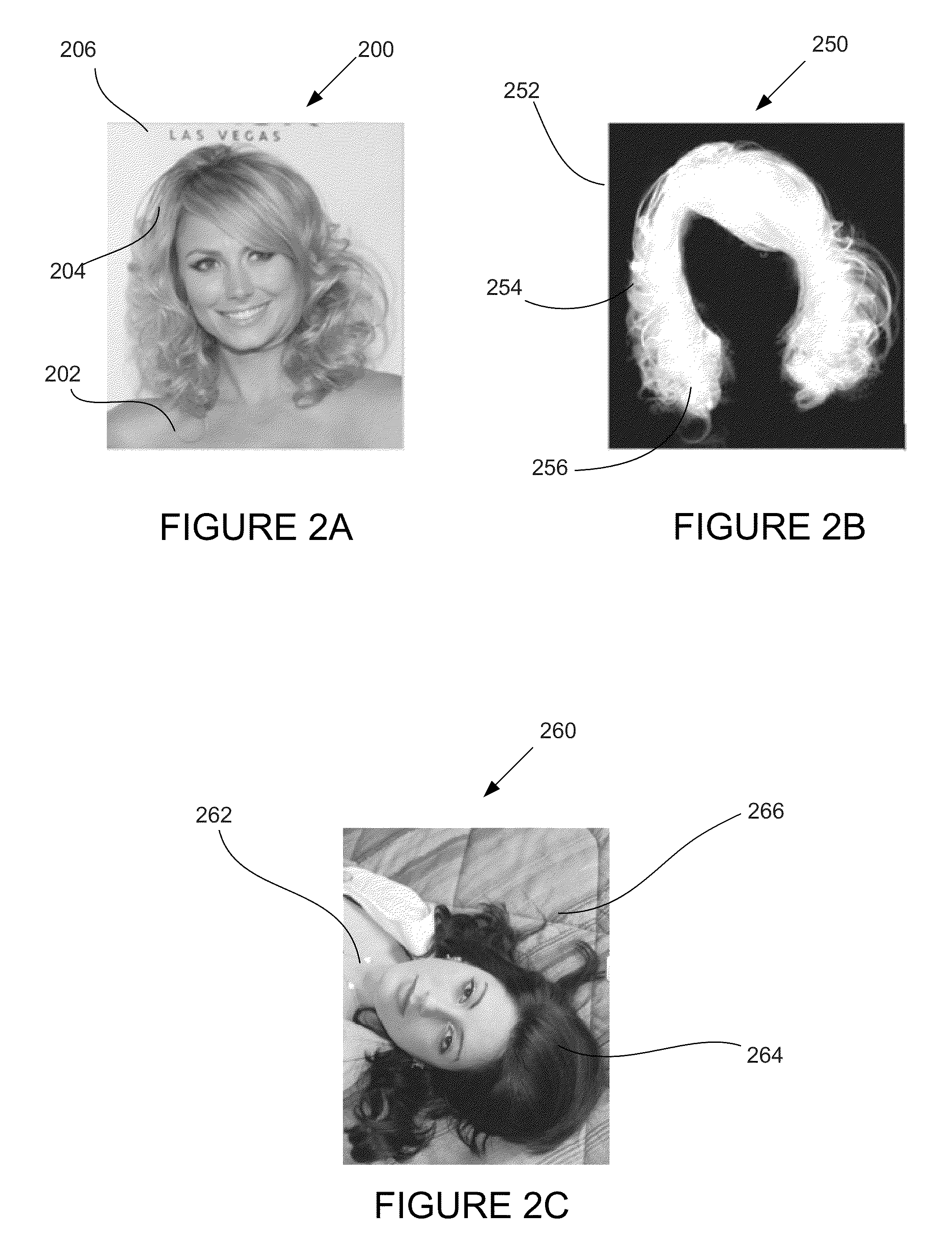System and method for changing hair color in digital images
a technology of digital images and hair color, applied in image enhancement, packaging foodstuffs, instruments, etc., can solve the problem of limited quality of these preview images
- Summary
- Abstract
- Description
- Claims
- Application Information
AI Technical Summary
Benefits of technology
Problems solved by technology
Method used
Image
Examples
example 1
Decomposing Starting Image and Target Hair Color Image into Regions
[0111]The starting image and a target hair color image can be decomposed into multiple images or patches, such that one or more described embodiments may be applied to each of the elements of the decomposition before recomposing the image. Two classes of decompositions are a spatial decomposition and a frequency decomposition.
[0112]In a spatial decomposition, both the starting image and an image associated with the target hair color, along with their corresponding alpha masks, are decomposed into regions, or patches, in a consistent fashion such that there is a correspondence between each patch in the starting image and a patch in the target image. For example, the images can be decomposed into the top, middle, and bottom thirds. The patches in the same image do not need to be the same size or shape, and corresponding regions between images may be of different size or shape. Patches may overlap each other. A patch ca...
example 2
Decomposing the Starting Image and the Target Hair Image Color Using Filters
[0117]Rather than decomposing the input image I(u,v) spatially into patches, the image can be decomposed by applying a set of n filters to the image to produce n filtered images Fi(u,v) where i ranges from 1 to n such that the image can be recomposed from the filter outputs. The recomposition process takes n images as input and produces a recomposed image. One decomposition technique is to apply a set of orthogonal linear filters to the input image I(u,v) and then recomposition R′(u,v) is accomplished by summing the filtered images:
R′(u,v)∑i=1nFi(u,v)
[0118]The filters might decompose the image based on spatial frequency. Along with the decomposition into n filtered images, there are n color distributions for the target hair color. These color distributions may be determined from filtering an image of a hairstyle with the target hair color to produce n filtered images. The color distributions need not be dist...
PUM
 Login to View More
Login to View More Abstract
Description
Claims
Application Information
 Login to View More
Login to View More - R&D
- Intellectual Property
- Life Sciences
- Materials
- Tech Scout
- Unparalleled Data Quality
- Higher Quality Content
- 60% Fewer Hallucinations
Browse by: Latest US Patents, China's latest patents, Technical Efficacy Thesaurus, Application Domain, Technology Topic, Popular Technical Reports.
© 2025 PatSnap. All rights reserved.Legal|Privacy policy|Modern Slavery Act Transparency Statement|Sitemap|About US| Contact US: help@patsnap.com



